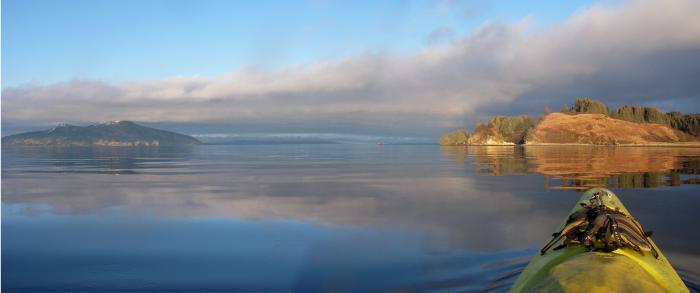Deep — Et'uuq

Alaskan fishermen pull all sorts of interesting things out of the ocean. The North Pacific’s strong currents carry an abundance of flotsam to Kodiak waters, delivering items from as far away as the tropics. Sometimes, however, these finds come not from the surface of the ocean but from the depths. In 2011, Bryan Wise pulled up a crab pot and found an ancient stone sinker clinging to the side. The find came from the mouth of Three Saints Bay in several hundred feet of water. A few years earlier, Carl Gronn made a similar discovery off the coast of Two-Headed Island.
These finds suggest that Alutiiq fishermen lowered their hooks into deep waters in search of halibut. But how did they reach the ocean floor? With kelp! A complete fishing rig in the collections of the Russian Museum of Anthropology and Ethnography features a large skein of kelp line. The skein is about 91 cm in diameter and contains over 40 individual loops. This suggests that the rig had over 120 feet of line.
Bull kelp is an excellent material for line because it is long and strong. The stipe or thin stem of a kelp plant can grow up to about 100 feet long and will stretch a great distance before breaking. Scientists report that kelp stems are as strong as wood or bone due to their elasticity. Alutiiq craftsmen took advantage of this unique property to create fishing line that would not only reach the ocean floor but that would hold a struggling fish.
